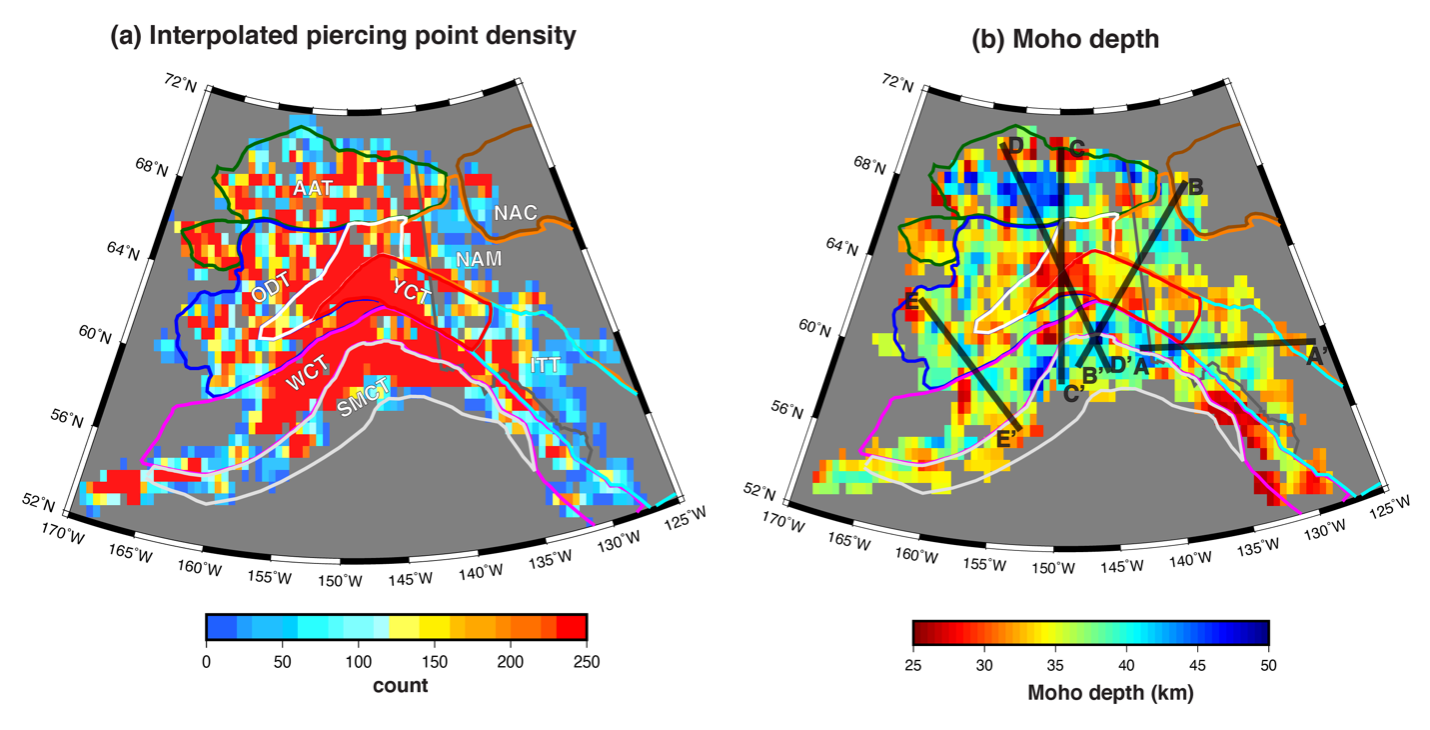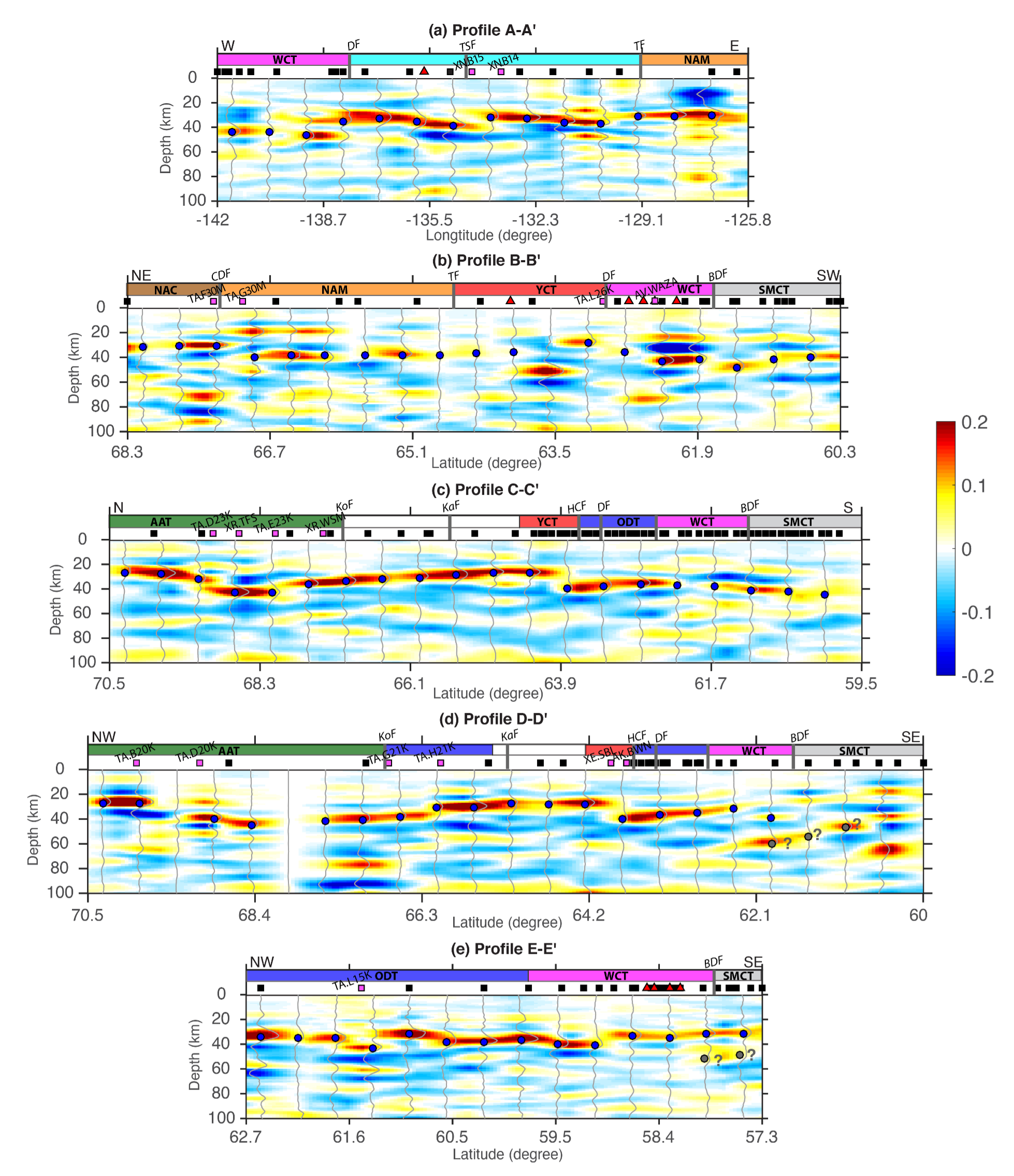Summary
An up-to-date map of the crustal thickness in Alaska and northwestern Canada were extracted from P wave receiver functions using the common conversion point (CCP) stacking method.
Quicklinks
Description
| Name | Alaska_NWCanada_Moho_2023 |
| Title | Depth of Moho beneath Alaska and Northwestern Canada |
| Type | Crustal thicknesses |
| Sub Type | Depth (km) |
| Year | 2023 |
| Data Revision | r0.0 (revision history) |
| Short Description | An up-to-date map of the crustal thickness in Alaska and northwestern Canada were extracted from P wave receiver functions using the common conversion point (CCP) stacking method. |
| Authors: | Meng Liu, Department of Geosciences, University of Massachusetts Amherst, 627 North Pleasant Street. Amherst, MA 01003, E-mail: mengliu@umass.edu Haiying Gao, Department of Geosciences, University of Massachusetts Amherst, 627 North Pleasant Street. Amherst, MA 01003, E-mail: haiyinggao@umass.edu |
| Reference Model | None |
| Prior Model | None |
| Model Download | Alaska-NWCanada-Moho-2023-0.5.r0.0.nc (see metadata) is the model in netCDF 3 Classic format. |
| Model Home Page | None |
| Depth Coverage | N/A |
| Area | Alaska and northwestern Canada (latitude: 52.0°/72.0°; longitude: -170°/-120°) |
| Data Set Description | This study calculates the P-wave receiver functions (RF) for 674 seismic stations in Alaska and northwestern Canada from 1999 to 2022 in order to provide an up-to-date map of the Moho depth distribution in this region. Our model extends from longitude 170°W to 120°W and latitude 52°N to 72°N. The Moho depth map is extracted from the common conversion point (CCP) stacking results by applying a 0.5° × 0.5° interpolation without any further lateral smoothing. |


Citations and DOIs
To cite the original work behind this Earth model:
- Liu, M., & Gao, H. (2023). Variations of crustal thickness in Alaska and northwestern Canada: Implications for crustal modification and accretion of tectonic units. Journal of Geophysical Research: Solid Earth, 128, e2023JB027428. https://doi.org/10.1029/2023JB027428
To cite IRIS DMC Data Products effort:
- Trabant, C., A. R. Hutko, M. Bahavar, R. Karstens, T. Ahern, and R. Aster (2012), Data Products at the IRIS DMC: Stepping Stones for Research and Other Applications, Seismological Research Letters, 83(5), 846–854, https://doi.org/10.1785/0220120032.
DOI for this EMC webpage: https://doi.org/10.17611/dp/emc.2023.alaska.nwcan.moho.1
Credits
- r0.0 model provided by Meng Liu.
Revision History
revision r0.0: uploaded October 25, 2023.
Timeline
- 2023-10-25
- r0.0 Online






